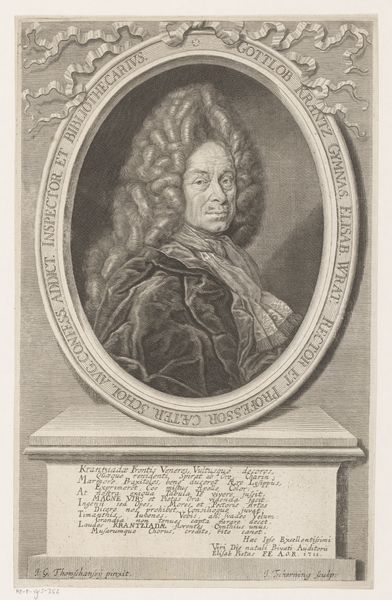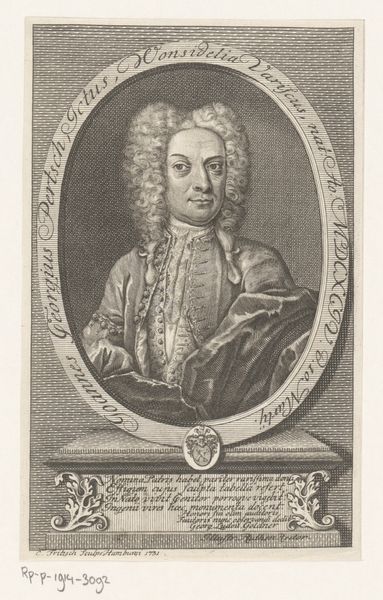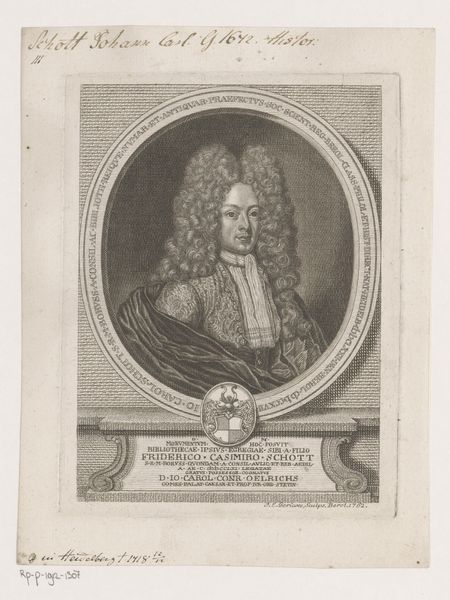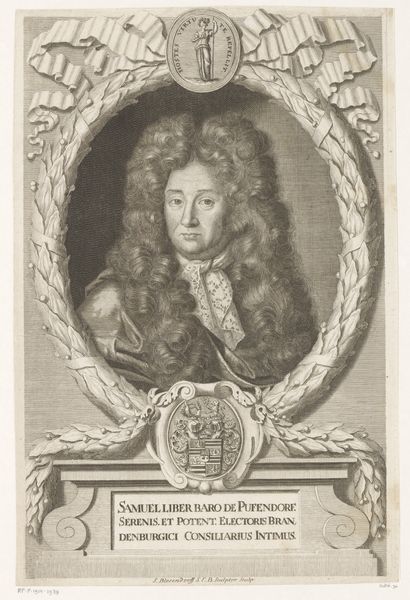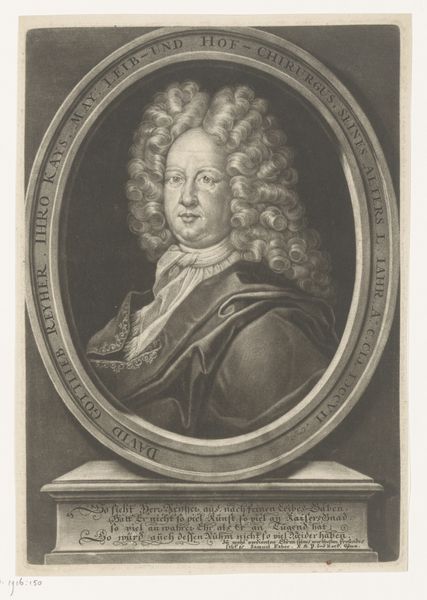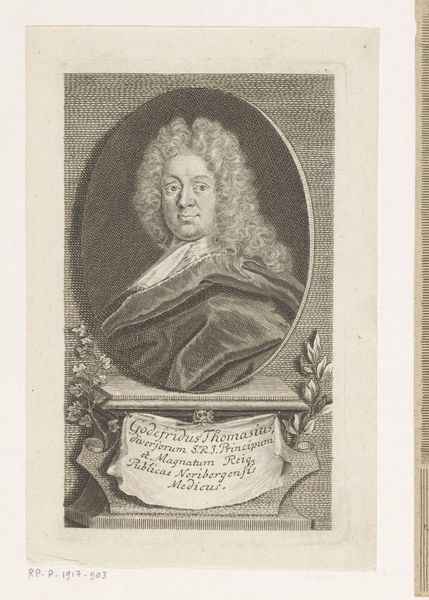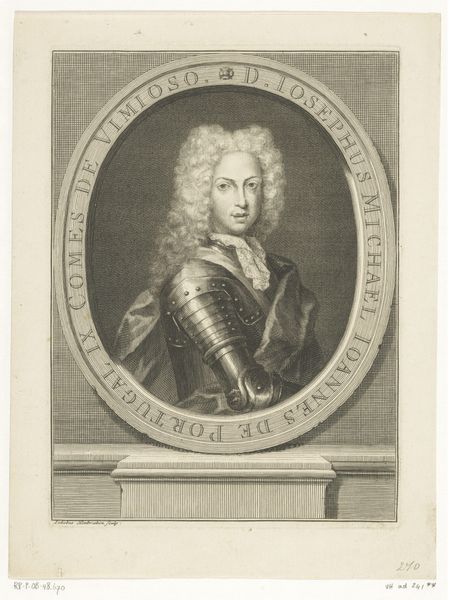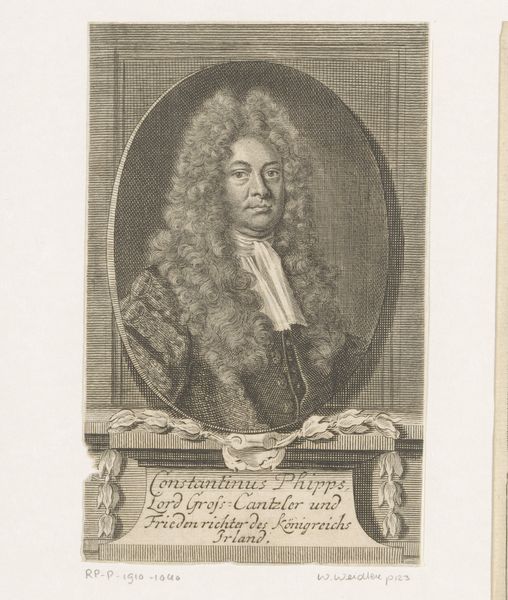
engraving
#
baroque
#
old engraving style
#
history-painting
#
academic-art
#
engraving
Dimensions: height 146 mm, width 85 mm
Copyright: Rijks Museum: Open Domain
Editor: Here we have Leonhard Heckenauer’s "Portret van Jozef Klemens van Beieren," an engraving dating roughly from 1681 to 1704, held in the Rijksmuseum. It's a striking portrait. Framed within an oval wreath, the young Joseph Clemens appears almost ethereal. How do you interpret this work? Curator: This engraving provides insight into the power dynamics of the period, doesn’t it? Consider how this image, through its creation and dissemination, actively participates in constructing and reinforcing a particular image of Joseph Clemens, emphasizing his lineage, status, and religious authority. This work embodies the ways in which visual representation bolsters ideological frameworks. Who do you think this was intended to influence? Editor: Maybe those in his immediate circle or other powerful families. Was this type of portraiture common? Curator: Precisely. Think of portraiture during this time as a crucial tool for solidifying social hierarchies. What does it mean to have your image circulated in this manner, especially for someone like Joseph Clemens, poised to inherit significant power? How might this portrayal contribute to shaping perceptions of leadership? Editor: So it’s about more than just documenting someone’s likeness. The image becomes a symbol of power. It also shows how important lineage and titles were. It's like he's born into these roles and everyone around him is reminded of this. Curator: Exactly. The symbolism embedded in his clothing, his pose, even the elaborate framing all speaks to pre-determined notions of power and authority tied directly to his family name. These notions are reinforced through repetitive imagery. What could a contemporary artist borrow from the composition of this artwork in order to either re-establish those symbols, or fight against them? Editor: I never thought of it as an act of reinforcing ideologies. It's interesting to view the work within a wider conversation. Curator: Indeed. It encourages one to critically analyze how power operates within visual culture.
Comments
No comments
Be the first to comment and join the conversation on the ultimate creative platform.
